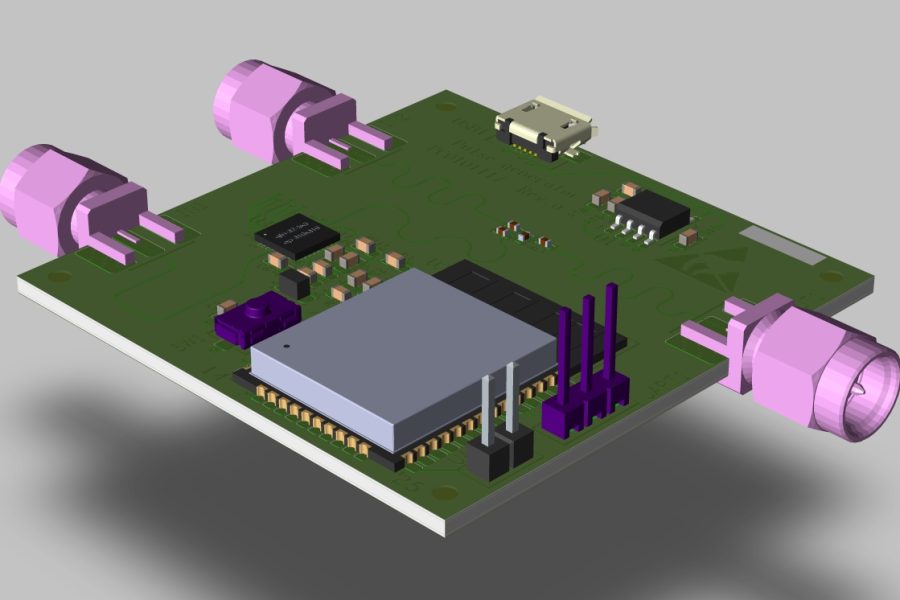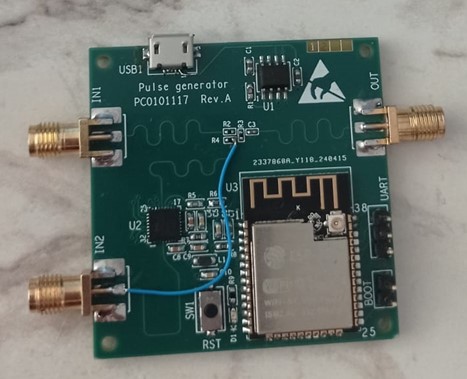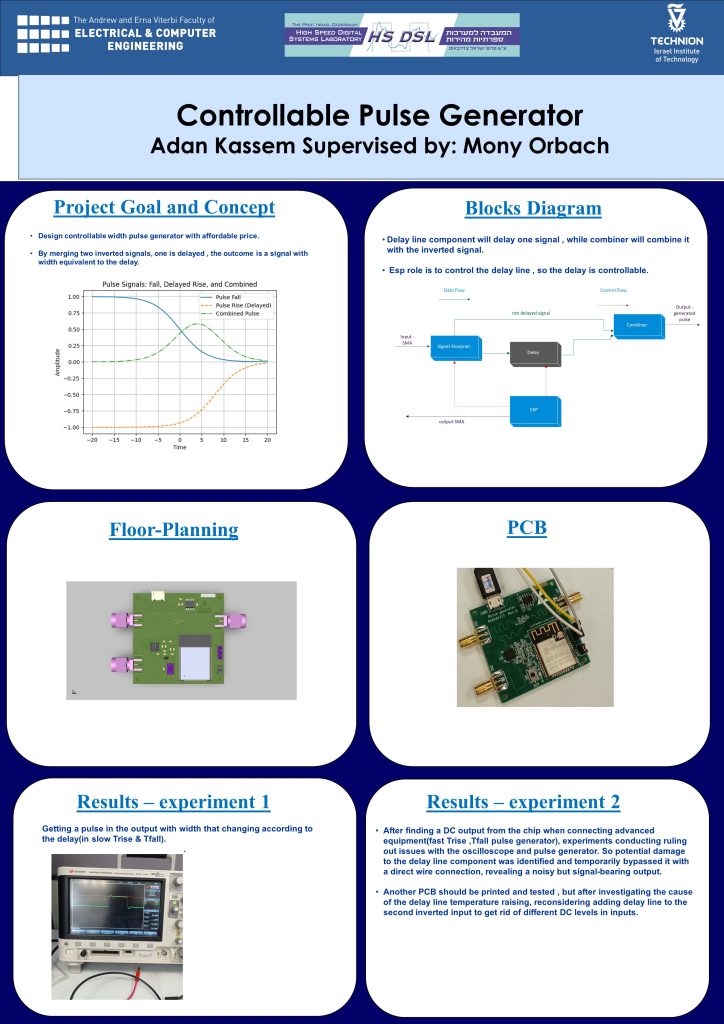Creation of a controllable width pulse generator with a much more affordable price.

The frequency of digital signals consistently rises as the demand for faster and more advanced devices continues to grow.
To assess high-speed PCBs effectively, employing a pulse generator with extremely narrow pulses, typically lasting in the range of hundreds of picoseconds, proves to be a valuable tool.
Utilizing pulses of this type enables the assessment of the bandwidth of the PCB channel.
Additionally, it aids in conducting Time Domain Reflectometry (TDR), a test analogous to radar, which assesses the electrical conductivity along the entire channel by examining signal reflections.
In the time domain, the pulse width, along with the rise time (Trise) and fall time (Tfall), dictates the bandwidth in the frequency domain.
Varied pulse widths, along with different rise times (Trise) and fall times (Tfall), can be employed to ascertain the bandwidth of the testing signal.
We currently have pulse generators with extremely narrow pulses available in the market, but they come with a high price tag.
Not only pulse generators capable of producing 800-picosecond pulses can cost tens of thousands of dollars.
But generators offering pulse control with adjustable width, rise time (Trise), and fall time (Tfall) might also be unavailable in the market.
Applying cutting-edge technologies and implementing resourceful PCB design which result in the creation of a controllable width pulse generator with a much more affordable price, in the tens of dollars range rather than thousands.
Project Goal is:
Applying cutting-edge technologies and implementing resourceful PCB design which result in the creation of a controllable width pulse generator with a much more affordable price, in the tens of dollars range rather than thousands.
In this project: we design such PCB and conduct simulation (in pre-silicone section) to check if the PCB perform this functionality.
in post silicone section, we implement Arduino controller and conduct several experiments, to check chip ability to generate controllable pulse.



